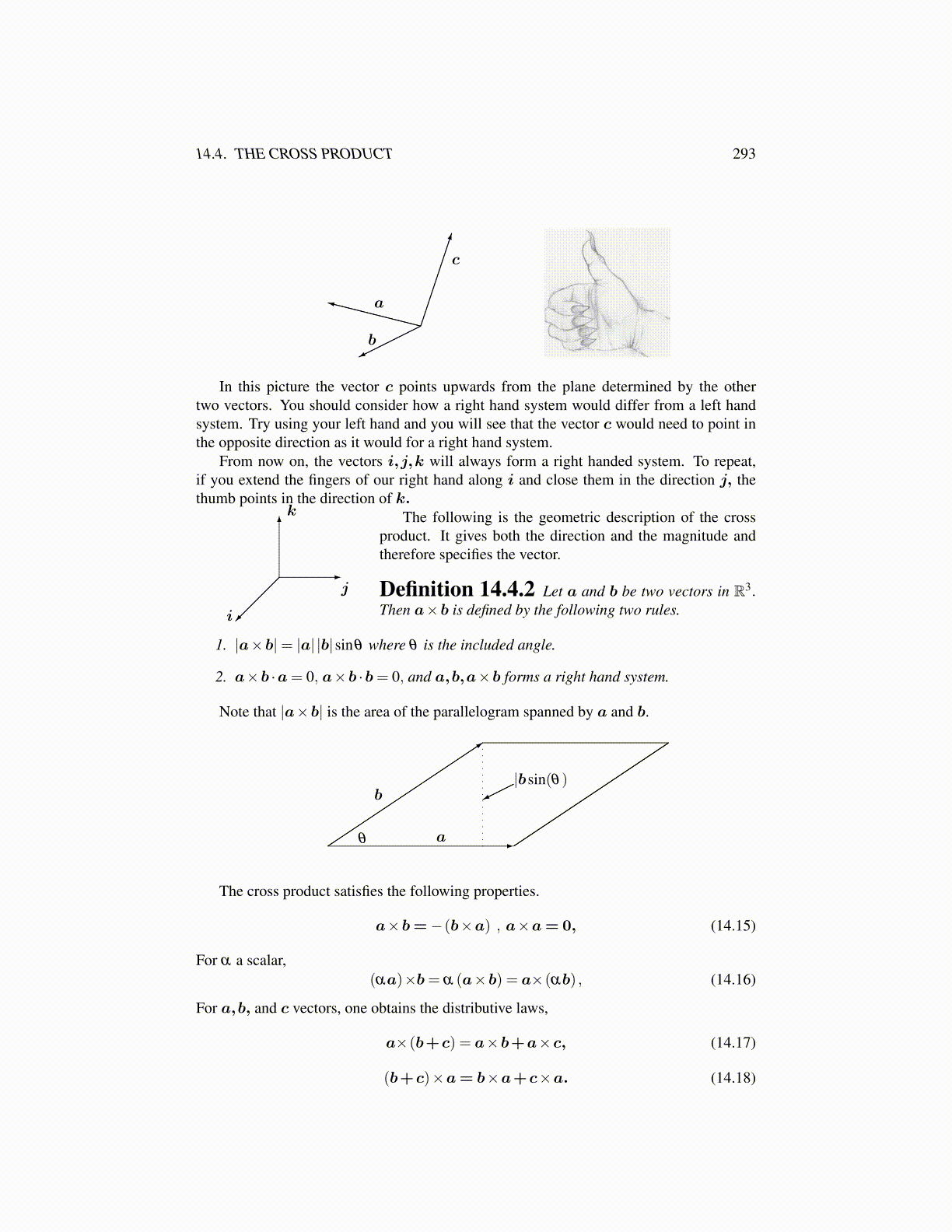
14.4. THE CROSS PRODUCT 293
a
b
c
In this picture the vector c points upwards from the plane determined by the othertwo vectors. You should consider how a right hand system would differ from a left handsystem. Try using your left hand and you will see that the vector c would need to point inthe opposite direction as it would for a right hand system.
From now on, the vectors i,j,k will always form a right handed system. To repeat,if you extend the fingers of our right hand along i and close them in the direction j, thethumb points in the direction of k.
k
i
j
The following is the geometric description of the cross product. It gives both thedirection and the magnitude and therefore specifies the vector.
Definition 14.4.2 Let a and b be two vectors in R3. Then a×b is defined by thefollowing two rules.
1. |a×b|= |a| |b|sinθ where θ is the included angle.
2. a×b ·a= 0, a×b ·b= 0, and a,b,a×b forms a right hand system.
Note that |a×b| is the area of the parallelogram spanned by a and b.
b
aθ
|bsin(θ)
The cross product satisfies the following properties.
a×b=−(b×a) , a×a= 0, (14.15)
For α a scalar,(αa)×b= α (a×b) = a×(αb) , (14.16)